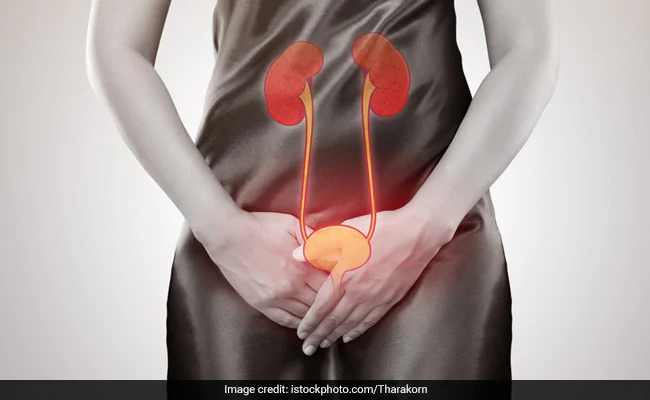- Our Doctors
- Our Specialities
Centres of Excellence
-
 Centre for Blood Diseases, BMT & Cancer Immunotherapy
Centre for Blood Diseases, BMT & Cancer Immunotherapy -
 Centre for Bone, Joint & Spine
Centre for Bone, Joint & Spine -
 Centre for Critical Care Medicine and ECMO Services
Centre for Critical Care Medicine and ECMO Services -
 Centre for Gastrosciences
Centre for Gastrosciences -
 Centre for Heart & Vascular Care
Centre for Heart & Vascular Care -
 Centre for Nephro-Urosciences
Centre for Nephro-Urosciences -
 Centre for Neurosciences
Centre for Neurosciences -
 Centre for Obstetrics and Gynaecology
Centre for Obstetrics and Gynaecology -
 Centre for Organ Transplantation
Centre for Organ Transplantation
Super Speciality
-
 Advanced Diagnostic and Interventional Radiology
Advanced Diagnostic and Interventional Radiology -
 Anesthesiology & Pain Management
Anesthesiology & Pain Management -
 Clinical Nutrition and Dietetics
Clinical Nutrition and Dietetics -
 Dental and Maxillofacial Surgery
Dental and Maxillofacial Surgery -
 Dermatology
Dermatology -
 Emergency and Trauma
Emergency and Trauma -
 Endocrinology and Metabolic Disease
Endocrinology and Metabolic Disease -
 ENT and Head & Neck Surgery
ENT and Head & Neck Surgery -
 Family Medicine
Family Medicine -
 General and Laparoscopic Surgery
General and Laparoscopic Surgery -
 General Medicine
General Medicine -
 Laboratory Medicine
Laboratory Medicine
-
- Key Procedures
- Our Hospitals
- International Patient
- Contact us
-
Quick Links
Blogs

Joint Replacement
Myths and Facts Regarding Joint Replacement Surgery
What Is Joint Replacement Surgery?
Its procedure in which the abnormal bone and lining structures of the joint are removed surgically and new parts, called prostheis are inserted in their places. These new parts may be made of special metal, plastic or specific kinds of ceramic-coated implants. The new parts allow the joints to move again with little or no pain.
Benefits of Surgery
Pain Relief: Depending on the type of arthritis you have, you may experience constant pain in the affected joints or during the movement. Although, some pain can be alleviated with heat and cold treatments, exercise, splints and drugs, the amount and intensity of pain can dramatically be reduced by surgery as well.
Increased Range of Motion: If you wait until the joint is severely damaged before surgery, some movement can be recovered, but the extent of it will be different in each person. After the operation, it will gradually improve the joint function along with this you need to take time and undergo physical therapy to regain a greater range of joint motion.
Better Use of Joints: Arthritis can, over time, cause inflammation and damage to bone and cartilage. This results in loss of use of the joint, which will hinder the performance of daily activities. If your joints have reached this stage, surgery may help you to regain the use of the joints.
Joint Alignment: Joints in the knees and feet can be deformed because of arthritis. Some types of surgery can help realign and straighten the joints, thus improving it’s ability to move or use.
What Causes Joint Pain?
In a normal joint, bones have a smooth surface made of a substance called articular cartilage on their ends that allows one bone to glide against another easily. Joints are lubricated by a thin layer of fluid called synovial fluid that acts like oil in an engine to keep parts gliding smoothly. When the articular cartilage wears, is damaged or the joint fluid is abnormal, the joints become stiff and painful, causing arthritis, which may be possible to treat with this surgery.
Myth: Joint replacement surgery means a long hospital stay
Fact: There have been big advancements in joint replacement surgery. It was normal to spend up to 10 days in the hospital after joint replacement surgery, but today the average is 3-4 days. With improvements in technology and patient care, hospital stays are significantly shorter than before. Patients usually stay less than two days after hip replacements and less than three days after knee replacements.
Myth: Joint replacement surgery is highly invasive
Fact: The misconception is that some patients think that the entire knee is replaced in a knee replacement surgery but there’s only a minimal amount of bone that’s taken before inserting the new parts. In knee replacement surgery, these parts consist of a metal cap for the femur, a metal base plate on the tibia and a piece of plastic in between, acting as cartilage. Surgeons today are also using less-invasive techniques and smaller incisions to perform replacements. It’s much less invasive than many people think.
Myth: Replacement joints wear out in 10 years or less
Fact: Due to improvements in materials and surgical techniques, today’s knee and hip replacements can last up to twice as long as comparable replacements done in the past. The quality components used have improved significantly. Newer implant materials like verilast have been tested for 30 years wear performance and have US – FDA approval.
Myth: If you’re under 50, you’re too young to have a joint replaced
Fact: Orthopaedic surgeons today do not classify a specific age to determine whether a patient is a good candidate for a hip or knee replacement surgery. Instead, the decision depends on the levels of disability and pain the patient is experiencing. In the past, the parts used for joint replacements had limited life spans. Now with the advancement of technology, there’s better longevity of replacement parts so it’s viable to put them in younger patients. Patients with severe arthritis don’t have to suffer through years of excruciating pain just because they’re young.
Myth: You should wait as long as possible before having a joint replaced
Fact: Waiting too long can make things worse. If your pain is so great that it’s hindering your ability to walk, then you’re not keeping your muscles and your extremities strong. You could be hindering the recovery process. Waiting until the last possible moment isn’t good for you. Rather than waiting for their mobility and quality of life to decline, patients should get their knee or hip replacement soon. This will likely improve their outcomes.
Myth: You need to take long bed rest after the surgery
Fact: Patients will start walking with a help of a walker immediately after the surgery, need to continue the walking aid till he/she gain enough muscle strength to walk independently, which may take 2- 4 weeks. During this period patient can walk in their premises as much as they want.
Myth: There is high chance of infection after Joint Replacement surgery.
Fact: The chance of infection after a Joint replacement surgery depends of the patient immunity status, Operation theatre facilities, experience of the surgeon and his team. Hence it is very important to select the hospital where you are going to perform the surgery, because once the artificial joint gets infected, it is very difficulty to eradicate the infection.
We hope you have a better understanding of joint replacement surgery, the myths & facts behind it, the possible causes for why joints need to be replaced and how the surgery helps people who suffer from joint issues.
Latest Posts
-
 Awake Craniotomy Jul 12, 2022
Awake Craniotomy Jul 12, 2022 -
 Curing Constipation Jul 12, 2022
Curing Constipation Jul 12, 2022 -
 The ‘Gut Health’ Buzz Jul 12, 2022
The ‘Gut Health’ Buzz Jul 12, 2022 -
 Tips to Prevent UTI Jul 12, 2022
Tips to Prevent UTI Jul 12, 2022
Categories
- Clinical Nutrition and Dietetics
- Endocrinology and Metabolic Disease
- General and Laparoscopic Surgery
- General Medicine
- Physical Medicine and Rehabilitation
- Psychiatry
- Centre for Heart & Vascular Care
- Centre for Bone, Joint & Spine
- Centre for Neurosciences
- Centre for Gastrosciences
- Centre for Nephro-Urosciences
- Centre for Blood Diseases, BMT & Cancer Immunotherapy
- Centre for Obstetrics and Gynaecology

 +91 9393 108 108
+91 9393 108 108















































